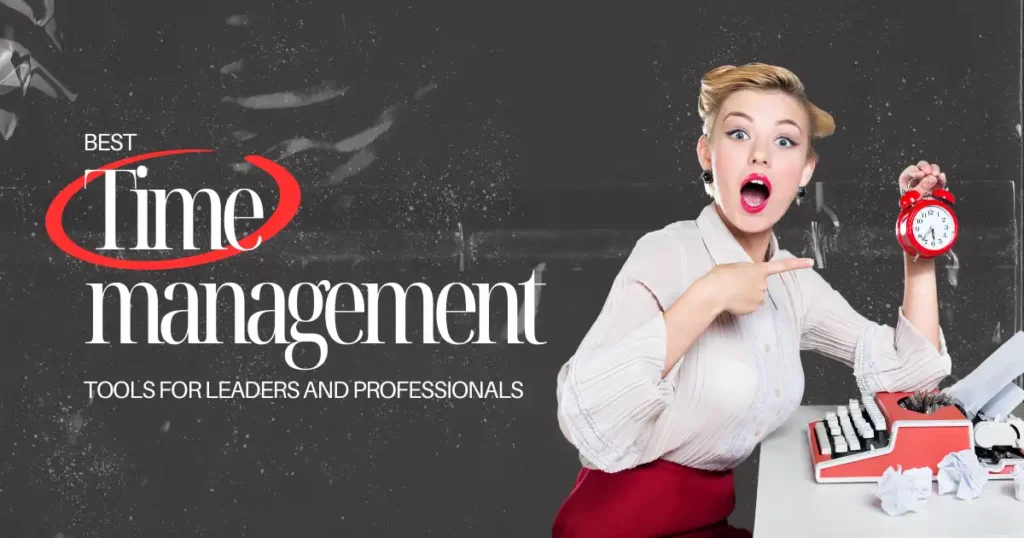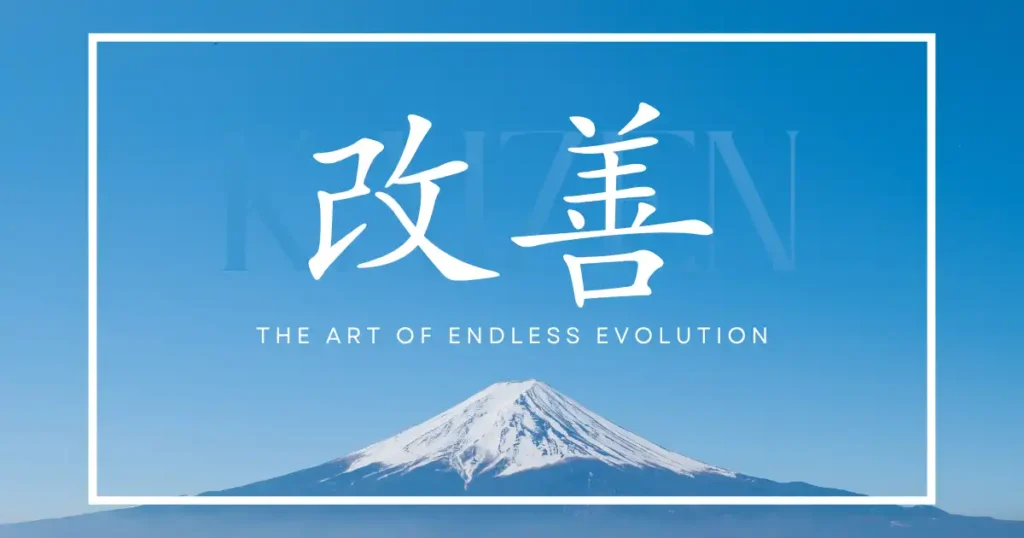Table of Contents
In today’s fast-paced professional environment, effective time management is not just a desirable skill—it’s a critical necessity for leaders and professionals. According to a Gallup poll, 23% of employees experience burnout often or always due to lack of time management and ineffective prioritization of tasks. Another survey conducted by Inc. found that the average professional spends 2.5 hours daily on non-productive activities, resulting in an annual loss of approximately $10,396 per employee due to inefficiency.
The consequences of poor time management are far-reaching, leading to missed deadlines, heightened stress levels, and decreased overall productivity. It not only impacts individual performance but also disrupts team dynamics and company outcomes. Mastering the art of time management is essential for anyone striving to meet their professional goals efficiently and maintain a healthy work-life balance.
In this article, we introduce some of the best time management tools and techniques available. By leveraging these tools, you can maximize productivity, minimize wasted time, and significantly enhance your professional performance.
Why Effective Time Management Matters for Professionals
Effective time management isn’t just about fitting more tasks into your day; it’s about making strategic decisions that lead to better outcomes.
Impact of Poor Time Management
According to a Harvard Business Review study, professionals waste nearly 21.8 hours per week on low-priority tasks, which constitutes 50% of their total work hours. This wasted time contributes to burnout, missed opportunities, and decreased efficiency. Lack of direction and poor time management can trickle down through the ranks, affecting overall team performance and resulting in lost revenue and lowered employee satisfaction.
Benefits of Time Management Tools
Time management tools are designed to improve how tasks are organized, tracked, and prioritized. Research by McKinsey indicates that using time management tools can increase productivity by up to 30%, helping leaders set clear goals, break down tasks into manageable chunks, and focus on what is most important. The result is higher efficiency, reduced stress, and enhanced job satisfaction.
Top Time Management Tools for Leaders and Professionals
Project and Task Management Tools
Trello

Overview: Trello is a board-based project management tool that allows users to visually organize tasks and projects.
Use Cases: Best for project management and team collaboration, Trello is highly effective for both small and large teams looking to streamline their workflow.
Key Features: Trello features Kanban boards, task automation via Butler, and Gantt charts through Power-Ups. These features help in visualizing the project’s progress and automating repetitive tasks.
Pricing: Trello offers a free plan with essential features. Paid plans start at $5/user per month, which include more advanced functionalities and integrations.
Reviews & Ratings:
G2: 4.4/5 (13,603 reviews)
Capterra: 4.5/5 (23,227 reviews)
For more information, visit Trello.
Asana

Overview: Asana is a versatile tool designed for managing complex projects. It’s ideal for breaking down large tasks into manageable chunks.
Use Cases: Best for large teams handling multiple projects, Asana excels in environments where task dependencies and timelines are crucial.
Key Features: Asana offers a Timeline view for visual project tracking, task dependencies to manage task orders, and comprehensive project tracking capabilities.
Pricing: Asana provides a free plan for basic project management needs. Paid plans begin at $10.99/user per month, offering advanced features like Timeline and custom fields.
Reviews & Ratings:
G2: 4.4/5 (10,396 reviews)
Capterra: 4.5/5 (12,954 reviews)
For more information, visit Asana.
Time Tracking and Productivity Tools
Time Doctor
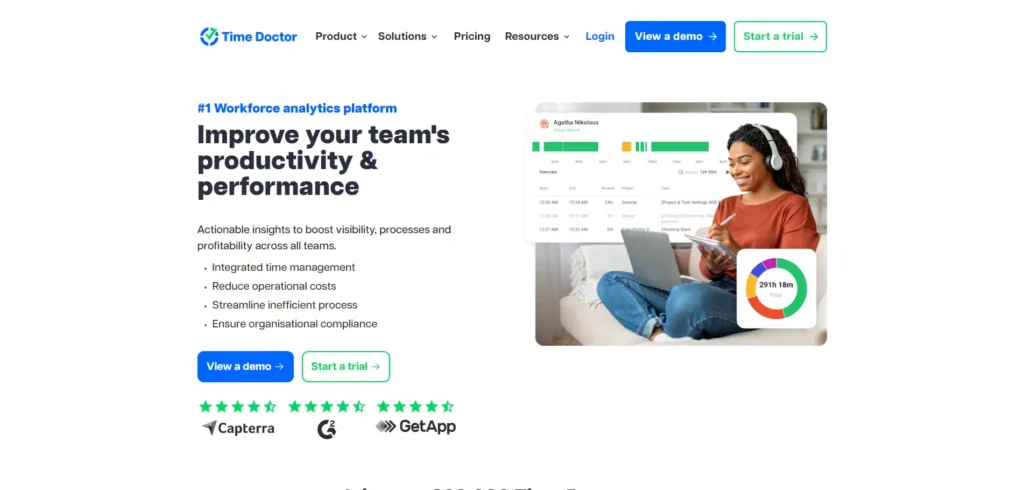
Overview: Time Doctor is a comprehensive time tracking and employee monitoring tool designed to boost productivity.
Use Cases: Best for companies wanting to track remote teams’ productivity, Time Doctor is ideal for monitoring time spent on tasks and identifying inefficiencies.
Key Features: The tool features real-time tracking, distraction alerts to keep employees focused, and detailed productivity reports to analyze performance.
Pricing: Pricing starts at $7/user per month with a 14-day free trial available for new users.
Reviews & Ratings:
G2: 4.4/5 (383 reviews)
Capterra: 4.5/5 (529 reviews)
For more information, visit Time Doctor.
RescueTime

Overview: RescueTime is an automatic time tracking tool that offers in-depth productivity analysis.
Use Cases: Best for individuals who want to monitor personal productivity, RescueTime helps users understand how they spend their time.
Key Features: It provides features like screen time tracking, focus sessions to block distractions, and productivity scores to gauge efficiency.
Pricing: RescueTime offers a free basic plan, while paid plans start at $6.50/month, providing more advanced analytics and features.
Reviews & Ratings:
G2: 4.1/5 (90 reviews)
Capterra: 4.6/5 (139 reviews)
For more information, visit RescueTime.
Scheduling and Planning Tools
Google Calendar
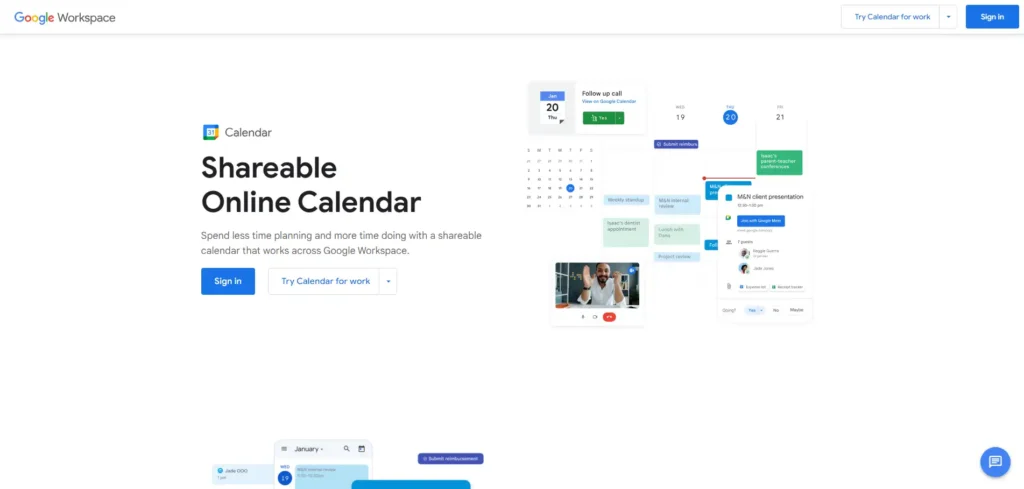
Overview: Google Calendar is a calendar-based scheduling and planning tool that helps professionals manage their time effectively.
Use Cases: Best for professionals needing scheduling and appointment management, Google Calendar ensures you never miss a meeting or deadline.
Key Features: It offers cross-device sync, event reminders, and seamless integration with other tools like Gmail and Google Meet.
Pricing: Google Calendar is free with a Google account, making it an accessible and essential tool for time management.
Reviews & Ratings:
G2: N/A (N/A reviews)
Capterra: 4.8/5 (3252 reviews)
For more information, visit Google Calendar.
Calendly
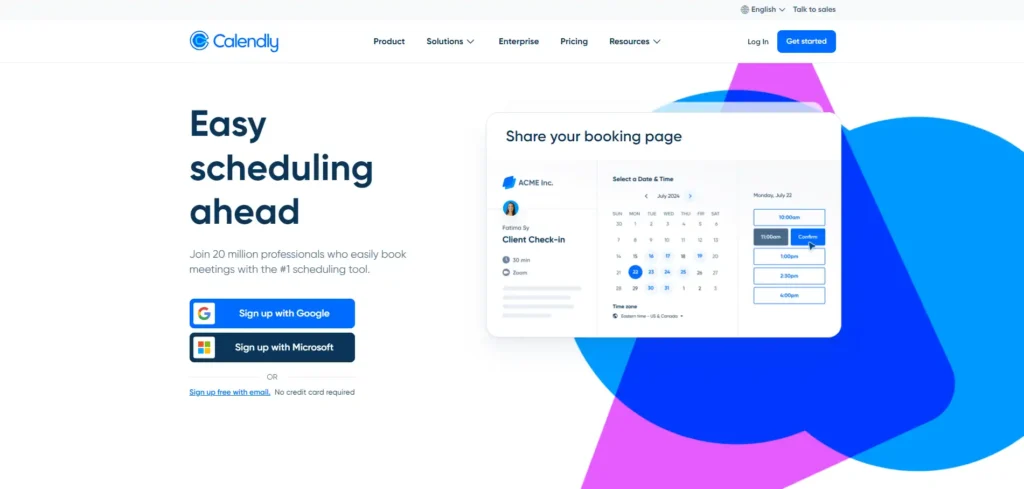
Overview: Calendly is an appointment scheduling tool designed to streamline meeting management.
Use Cases: Ideal for leaders managing multiple client meetings, Calendly simplifies the process of setting up appointments without back-and-forth emails.
Key Features: It includes features like meeting slots, auto-sync with Google Calendar, and custom event types to fit various scheduling needs.
Pricing: Calendly offers a free basic plan, with paid plans starting at $10/user per month for more advanced scheduling features.
Reviews & Ratings:
G2: 4.7/5 (2,220 reviews)
Capterra: 4.7/5 (3,649 reviews)
For more information, visit Calendly.
Note-Taking and Idea Management Tools
Evernote
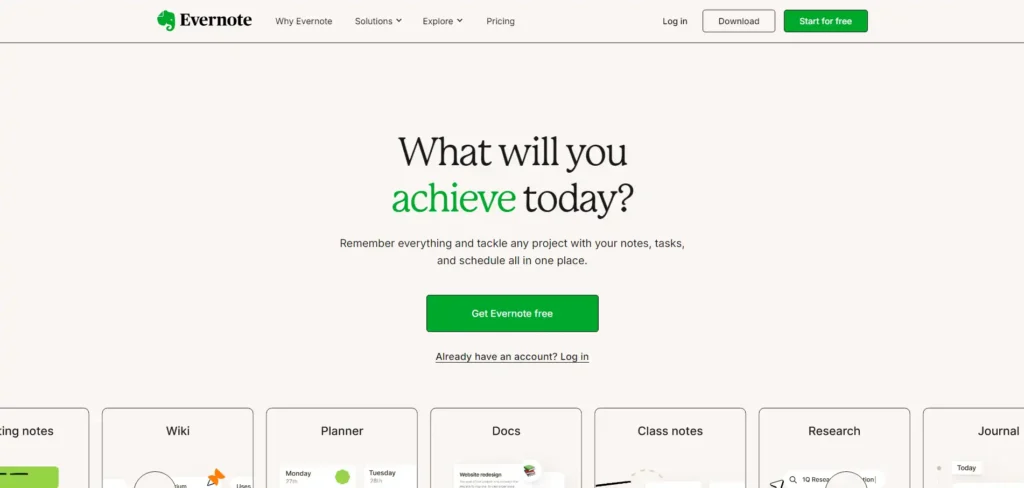
Overview: Evernote is a versatile note-taking tool that helps users capture and organize ideas, tasks, and documents.
Use Cases: Ideal for brainstorming and storing project-related notes, Evernote is a go-to solution for professionals who need to keep their thoughts organized.
Key Features: It offers document scanning, multi-device sync, and rich-text formatting to create detailed and organized notes.
Pricing: Evernote provides a free plan with basic features. Paid plans start at $10.83/user per month for personal plan, offering more storage and advanced functionalities.
Reviews & Ratings:
G2: 4.4/5 (2,010 reviews)
Capterra: 4.4/5 (8,258 reviews) (Evernote Teams)
For more information, visit Evernote.
Microsoft OneNote
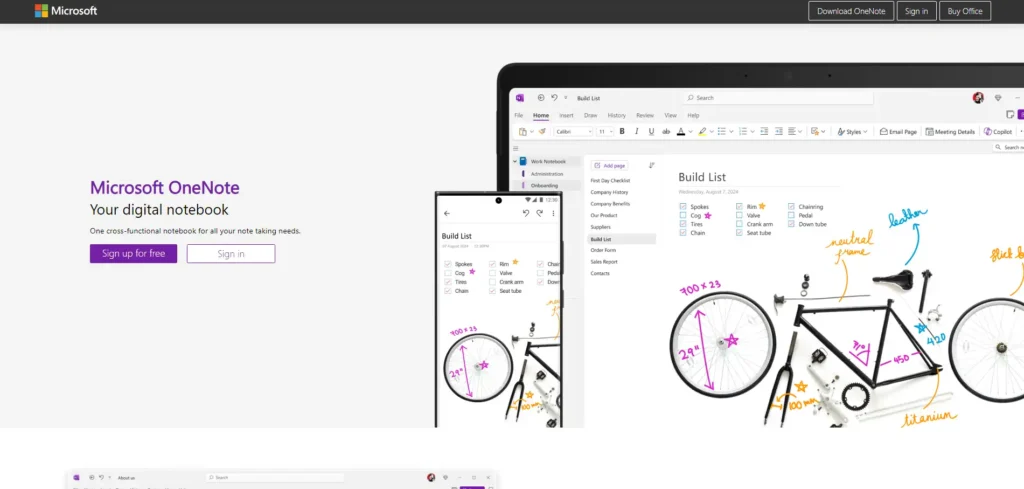
Overview: Microsoft OneNote is a note-taking app with advanced organization features designed for structured note-taking and task management.
Use Cases: Best for structured note-taking and task management, OneNote helps professionals organize their notes in a digital notebook format.
Key Features: It includes multimedia support, collaboration capabilities, and a digital notebook format to keep notes organized and easily accessible.
Pricing: OneNote is free with a Microsoft 365 subscription, making it a valuable addition for users already within the Microsoft ecosystem.
Reviews & Ratings:
G2: 4.5/5 (1,836 reviews)
Capterra: 4.6/5 (1,787 reviews)
For more information, visit Microsoft OneNote.
Effective Time Management Techniques
Pomodoro Technique
Overview: The Pomodoro Technique is a time-blocking method designed for short bursts of focused work followed by brief breaks.
How It Works: You work for 25 minutes (known as a “Pomodoro”) and then take a 5-minute break. After four Pomodoros, take a longer break of 15-30 minutes. This cycle helps maintain high levels of productivity while preventing burnout.
Benefits: This technique helps reduce burnout by ensuring regular breaks, improves focus by creating a sense of urgency, and maintains motivation by breaking tasks into manageable intervals. By working in short, concentrated bursts, you can sustain your energy levels and keep your mind sharp throughout the day.
Eisenhower Matrix
Overview: The Eisenhower Matrix is a decision-making tool that helps prioritize tasks based on their urgency and importance.
How It Works: Tasks are divided into four quadrants:
- Urgent and important (do immediately),
- Important but not urgent (schedule for later),
- Urgent but not important (delegate if possible),
- Neither urgent nor important (eliminate if possible).
Benefits: This method helps professionals focus on high-priority items and delegate or eliminate less critical tasks. By categorizing tasks, you can ensure that your time and energy are spent on activities that truly matter, increasing overall efficiency and productivity.
Eat That Frog
Overview: The “Eat That Frog” technique prioritizes tackling the toughest task first thing in the morning.
How It Works: Identify your most challenging or dreaded task (the “frog”) and complete it first thing in the morning before moving on to other activities. The idea is to start your day with a sense of accomplishment, which sets a positive tone for the rest of your day.
Benefits: This technique reduces procrastination by encouraging you to face difficult tasks head-on. It also builds momentum for the day, as completing a significant task early on boosts your confidence and motivation to tackle subsequent tasks.
Time Blocking
Overview: Time blocking is a scheduling technique that assigns specific blocks of time for different tasks.
How It Works: Allocate distinct time slots throughout your day for various activities, such as work tasks, meetings, and personal time. This method involves planning your day in advance and sticking to the schedule as closely as possible.
Benefits: Time blocking increases structure in your day, minimizes distractions by dedicating set times for certain activities, and boosts productivity by helping you focus on one task at a time. By compartmentalizing your time, you can ensure that all important activities receive adequate attention.
Rapid Planning Method (RPM)
Overview: The Rapid Planning Method (RPM) is a goal-setting technique that focuses on outcomes and purpose.
How It Works: Organize tasks based on the result you aim to achieve and the purpose behind each activity. Start by defining what you want (the result), why you want it (the purpose), and how you’ll achieve it (the actions). This method emphasizes the importance of aligning your daily activities with your larger goals.
Benefits: RPM aligns actions with larger goals, improves focus by clarifying the purpose behind each task, and enhances motivation by connecting daily activities to meaningful outcomes. By focusing on the “why” and “what” of your tasks, you can stay motivated and ensure that your efforts contribute to your broader objectives.
Check out our Time Value Map Certification Course
How to Choose the Right Time Management Tool for Your Needs
Choosing the right time management tool can significantly enhance your productivity, but it’s essential to select one that aligns with your specific requirements. Here are some key factors to consider:
Factors to Consider
- Ease of Use: A tool should be user-friendly and intuitive. If it’s complicated to navigate, it might add more stress rather than alleviating it.
- Features: Look for features that match your needs, such as task management, time tracking, or collaborative capabilities.
- Integrations: Ensure the tool integrates well with other software you already use, like email, calendars, or project management platforms.
- Pricing: Consider whether the tool fits within your budget. Many tools offer free plans with basic features and paid plans with advanced functionalities.
Assessing Your Workflow
- Project Management: If you manage multiple projects, tools like Trello or Asana could be beneficial due to their robust project tracking and team collaboration features.
- Individual Productivity: For personal productivity, tools like Todoist or RescueTime can help you stay focused and track your activities.
- Team Collaboration: If you work in a team environment, tools like Slack or Microsoft Teams enhance communication and collaboration.
Tool Compatibility
Evaluate how well the tool integrates with your existing processes and tools. For example, if you use Google Calendar for scheduling, a tool that syncs seamlessly with it will save you time and effort. Compatibility ensures a smoother workflow and reduces the learning curve associated with adopting new tools.
Combining Tools and Techniques for Maximum Efficiency
To achieve maximum efficiency, consider pairing time management tools with effective techniques. Here are some recommended combinations:
Tool and Technique Pairings
- Pomodoro Technique with Time Doctor: Use Time Doctor to track your 25-minute work intervals and 5-minute breaks, helping you stay focused and productive.
- Eisenhower Matrix with Trello: Organize tasks in Trello using the Eisenhower Matrix framework to prioritize tasks based on urgency and importance.
Creating a Workflow
Sample Workflow:
- Morning Planning: Start your day by creating a task list in Trello, prioritizing tasks using the Eisenhower Matrix.
- Focus Sessions: Use the Pomodoro Technique with Time Doctor to work on high-priority tasks in focused bursts.
- Communication: Use Slack for team updates and quick communication throughout the day.
- End-of-Day Review: Review your tasks in Trello, mark completed tasks, and plan for the next day.
Case Study
Example: Sarah, a project manager, successfully uses a combination of Trello and the Pomodoro Technique. She starts her day by organizing tasks in Trello, prioritizes them using the Eisenhower Matrix, and works in focused 25-minute intervals. This approach has helped her meet deadlines consistently and reduce stress levels.
Conclusion and Final Recommendations
Effective time management is essential for professional success. Tools like Trello, Asana, and Time Doctor, combined with techniques such as the Pomodoro Technique and Eisenhower Matrix, can help you stay organized, prioritize tasks, and maximize productivity. Choose tools and strategies that fit your needs, and start experimenting to find the best workflow. The goal is to focus on what truly matters and achieve more in less time. Implement these solutions today, and see a noticeable improvement in your productivity and work satisfaction!

